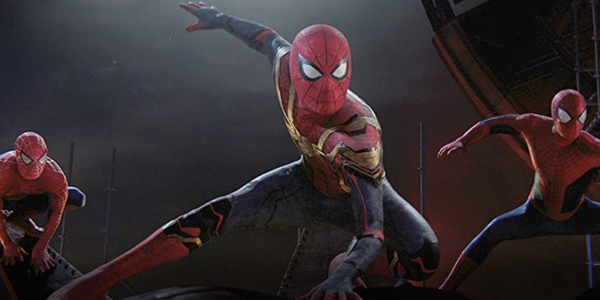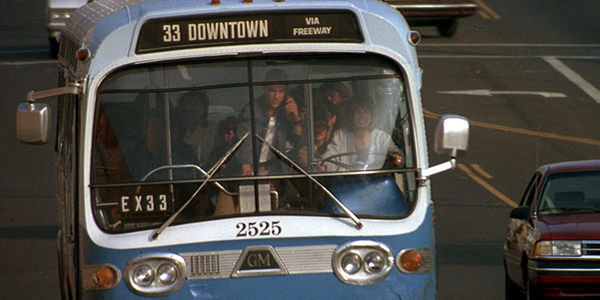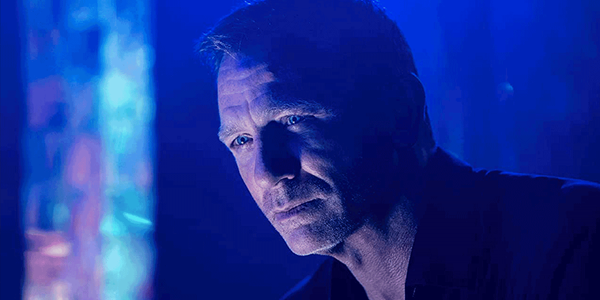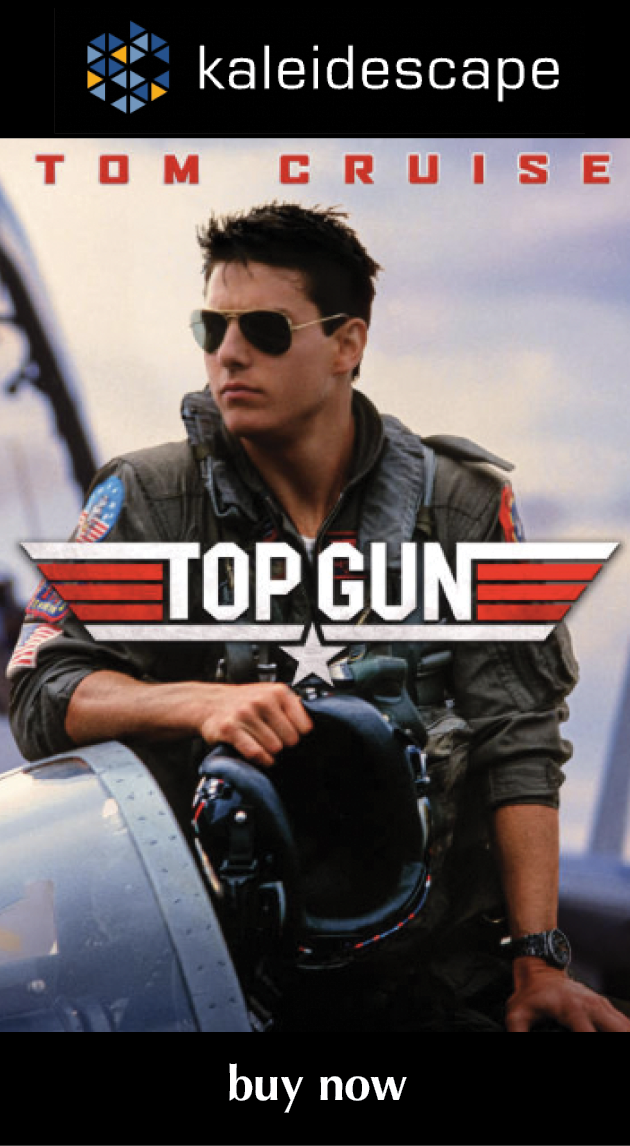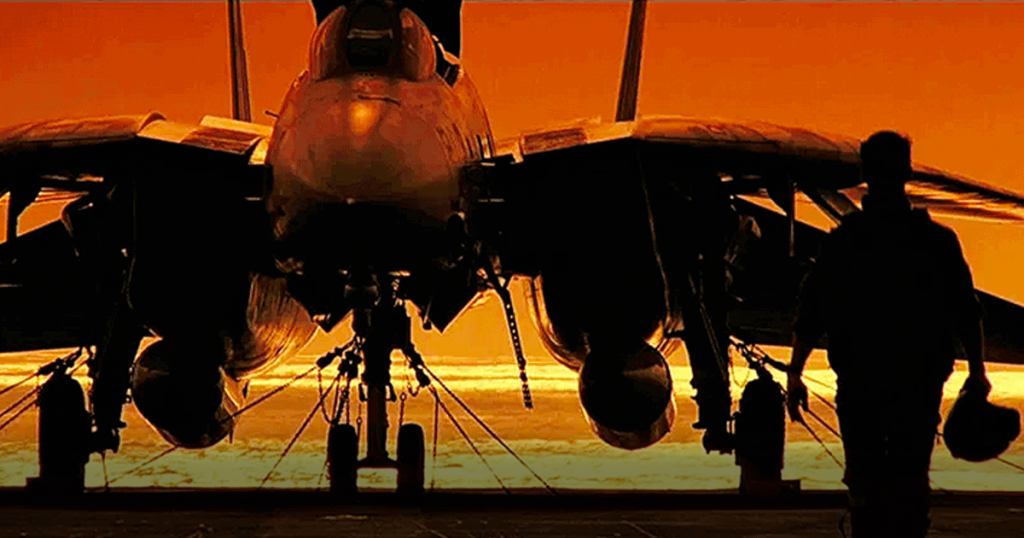
review | Top Gun (1986)
A 4K/Atmos makeover helps breathe new life into this Tom Cruise career-maker
by John Sciacca
May 21, 2020
The United States Navy could scarcely have crafted a more effective recruiting film for promoting naval aviation than if they had actually written, produced, and directed Top Gun. (The Navy was involved in the production, providing access to jets and pilots, allowing filming on an active carrier, and suggesting some script rewrites.)
Tony Scott’s fast-paced film introduced viewers to a world most have never heard of—a school where the Top 1% of fighter pilots went to hone their craft—and does everything possible to glamorize the fast-paced, life-on-the-edge, alpha-male lifestyle that is being the best-of-the-best: A member of the Navy’s elite carrier-based fighter squadron. Beyond its huge success at the box office—and launching a bomber-jacket craze across the country—the movie actually led to a huge recruiting increase for the Navy, to the point where recruiters actually set up stations at some theaters showing the film!
Beyond establishing his bona fides as a big-budget action director, Top Gun was Scott’s first collaboration with the dynamic production duo of Jerry Bruckheimer and Don Simpson. The film also features a host of young rising stars, including Tom Cruise in the lead role of something-to-prove renegade, Maverick; Val Kilmer as the mechanical, precise, and aloof Iceman; Anthony Edwards as Maverick’s RIO (Radio Intercept Officer, aka “back seater”), Goose; and the too-cute Meg Griffin as Goose’s wife, Carole. (Also, keep an eye out for an incredibly young-looking Tim Robbins as Merlin on the carrier at the end when he removes his flight helmet.)
Released in 1986, Top Gun holds up incredibly well (except for the technology shown in the post-flight briefs, which looks like a worn-out VHS tape badly in need of some head tracking). Sure, some of the banter is cheesy, and there’s that random shirtless volleyball scene, but overall the film remains very entertaining, with enough of a plot and character development to keep you involved and caring about the characters until the next aerial dogfight. The numerous air-combat scenes feature actual planes opposed to the “let’s do it in CGI” world most effects films now live in. And the camera angles and dynamic pacing remain dynamic and exciting, and offer a sense of what it’s like to sit in the cockpit as you pull high-G maneuvers and go head-to-head against another jet with closing speeds exceeding 1,000 miles per hour. And the soundtrack is still every bit as catchy as you remember.
Top Gun was filmed in Super 35 format (apparently because the anamorphic lenses were too large to fit inside the F-14 Tomcat’s cockpit) and comes to the home market with a new scan of the film taken from a 4K digital intermediate. This release was likely designed to coincide with—and build excitement for—the upcoming sequel, Top Gun: Maverick, originally scheduled for theatrical release on June 24, now pushed to December 23.
As good as the film looks—which, without question, is the best it has ever looked—it isn’t realistic to expect it to have the same razor-sharp edges and micro detail of modern films shot digitally. The opening shots of the jets sitting on the carrier deck with the early morning light and smoke billowing around reveal a fair bit of grain and noise—as do some of the flying scenes taken in low-lighting conditions—but this is rarely distracting, and stays true to the film’s look instead of taking too heavy a hand with the digital noise reduction.
Edges are sharp and defined throughout, and closeups reveal tons of detail. Every star is clearly visible on the shoulder flag patches worn on uniforms, and you see the scratches, scuffs, and even seams in the detail tape used to decorate the pilots’ flight helmets. Tight shots on actors’ faces reveal every pore and whisker (including one distracting whisker Viper [Tom Skerrit] obviously missed while shaving), along with Cruise’s unibrow, which has various stages throughout.
Something both my wife and I commented on was just how sweaty the actors are. Like, a lot. Faces are almost always covered, nay drenched, in sweat, even when there is apparently no reason for it. I’ve no doubt the US Navy Fighter Weapons School is an intense program, but actors frequently look like they have just finished a lengthy Bikram Yoga class. But these are the kinds of details the 4K transfer makes you aware of.
Colors are natural and lifelike, with that orange-pink-purple color of West Coast evening sunsets looking very accurate and free of noise and banding—something difficult for a streaming service to do on a highly compressed delivery. The high dynamic range gives some nice punch to the gleaming white T-shits, adds some nice brightness boosts to the Tomcat engines on full afterburners, and provides images with more overall depth and dimension.
The audio mix has been given a full Dolby TrueHD Atmos makeover, and while not as dynamic as a modern mix, it does a fantastic job of breathing new sonic life into this near-35-year-old film. Right from the start, Harold Faltermeyer’s “Top Gun Anthem” is given more space and room, then come the sounds of the mechanical noises aboard the carrier deck—the whipping winds, the ratcheting of gear and retracting chains, the roar as jet engines spool up for launch, and the steam from the catapult launch.
Once in the air, you can appreciate the increased dynamics of the high-powered jet engines, with jets streaking and roaring past overhead or ripping back along the side walls. Beyond the throaty roar of the engines, missile impacts and explosions have a ton of bass output that will energize your room. The final scene, as Maverick and Ice hold off the Russian MiGs, sounds fantastic, and will likely become part of your home theater demo reel.
The soundtrack also does a nice job of delivering subtle (and not so subtle) atmospheric effects. For example, there is a completely different sonic quality when the camera is inside the cockpit, with the sounds of wind outside and breathing through the oxygen mask, compared to outside the jet. And when in the classroom, you’ll hear a variety of appropriate background sounds in the distance, including various planes and helicopters, as well as a jet periodically ripping past overhead.
Top Gun is a classic for a reason, and it remains as much fun to watch now as the first time I saw it at a matinee back in the summer of 1986. Paramount did a wonderful job restoring the film, and this new 4K HDR version with Dolby Atmos audio is guaranteed to make your home theater feel the need . . . the need for speed!
(I was fortunate enough to do an overnight stay aboard a US aircraft carrier on deployment, and got to stand on the “foul line” and watch them launch and recover F-18s—a sound that feels like it’s going to shred your ears and shake your body to bits! You can read more about my real-life adventure here.)
Probably the most experienced writer on custom installation in the industry, John Sciacca is co-owner of Custom Theater & Audio in Murrells Inlet, South Carolina, & is known for his writing for such publications as Residential Systems and Sound & Vision. Follow him on Twitter at @SciaccaTweets and at johnsciacca.com.
PICTURE | As good as this film looks—and this is the best it has ever looked—it isn’t realistic to expect it to have the same razor-sharp edges and micro detail of modern films shot digitally
SOUND | The mix has been given a full Dolby TrueHD Atmos makeover, and while not as dynamic as a modern mix, it does a fantastic job of breathing new sonic life into this near-35-year-old film
© 2025 Cineluxe LLC


